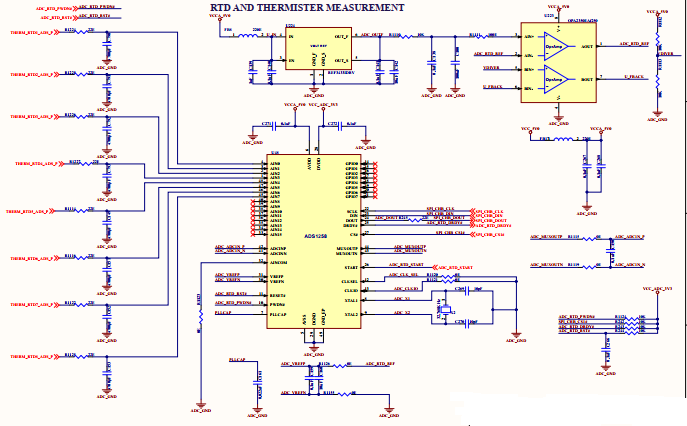Other Parts Discussed in Thread: REF3433
Hi,
Anybody Please Review our schematics and share your valuable feedback.
I have few Questions.
1.How to terminate unused ADC channels and GPIO Lines, currently we are using only 8 ADC Channels.
2.external crystal has 70K series Resistance ,it is ok or we need to change the Different crystal.
3.AVSS and DGND we are using same GND.it is correct or we need to maintain separate GNDs.




